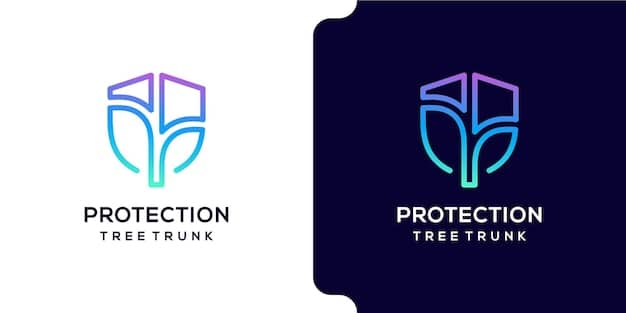SEC Proposes New Rules for SPACs: What to Know

The Securities and Exchange Commission (SEC) has proposed new rules aimed at enhancing investor protection in Special Purpose Acquisition Companies (SPACs), addressing concerns about disclosures, liabilities, and conflicts of interest.
The SEC Proposes New Rules for SPACs: What You Need to Know. These proposed changes could significantly alter how SPACs operate and affect investors.
Understanding SPACs: A Quick Overview
Special Purpose Acquisition Companies (SPACs) have gained popularity as an alternative way for private companies to go public. Understanding the basics of SPACs is crucial for grasping the implications of the SEC’s proposed rules.
A SPAC is essentially a shell company that raises capital through an initial public offering (IPO) with the sole purpose of acquiring an existing private company. This acquired company then becomes a publicly traded entity. Let’s delve deeper into the mechanics and appeal of SPACs.
How SPACs Work
Here’s a step-by-step breakdown of how SPACs generally operate:
- Formation: A management team forms a SPAC, often referred to as the “sponsor,” and registers it with the SEC.
- IPO: The SPAC conducts an IPO to raise capital from public investors. The funds raised are held in a trust account.
- Target Acquisition: The SPAC’s management team identifies a private company to acquire, a process that can take up to two years.
- Due Diligence and Negotiation: The SPAC conducts due diligence on the target company and negotiates the terms of the acquisition.
- Shareholder Vote: SPAC shareholders vote on whether to approve the proposed acquisition.
- De-SPAC Transaction: If approved, the acquisition is completed, and the private company becomes a publicly traded company.
The appeal of SPACs lies in their ability to offer a potentially faster and less regulated route to the public markets compared to traditional IPOs. However, this speed and reduced scrutiny have also raised concerns about investor protection.

Key Provisions of the Proposed SEC Rules
The SEC’s proposed rules aim to address perceived gaps in investor protection within the SPAC framework. These rules cover various aspects, from disclosures to liability and alignment of incentives.
The proposed rules are extensive and touch upon crucial elements of the SPAC process. Here’s a closer look at some of the key provisions under consideration:
Enhanced Disclosures
The SEC proposes to require more comprehensive disclosures regarding SPAC sponsors, their compensation, potential conflicts of interest, and the fairness of the de-SPAC transaction. These enhanced disclosures are intended to provide investors with a clearer picture of the risks and rewards involved.
These rules also propose that any projection a SPAC presents to investors should have a clear purpose and strong backing. The SEC wants SPACs to carefully consider the projections included in filings and only present projections when they are supported by documentation.
Liability Concerns
A major area of focus for the SEC is addressing the potential liability of parties involved in the SPAC transaction. The proposed rules would clarify that SPAC sponsors can be held liable as gatekeepers for false or misleading statements made during the de-SPAC process.
- The underwriter in a SPAC IPO could potentially be liable for misstatements.
- Anyone signing the registration statement could potentially be liable, including the target company, its executives and potentially the sponsor.
- The SEC has focused on the underwriter liability because they play a key role in the due diligence process.
The SEC believes that clarifying liability in the SPAC process will incentivize greater due diligence and accountability, ultimately benefiting investors.
Increased Investor Protection
The SEC’s proposed rules are designed to boost investor protection throughout the SPAC lifecycle. By increasing transparency and accountability, the SEC seeks to level the playing field for retail investors that are not as informed as professionals.
One of the key goals of the proposed rules is to ensure that investors have access to the information they need to make well-informed decisions. This means not only providing more data but also presenting it in a clear and understandable manner.
Alignment of Incentives
The proposed rules also target the misalignment of incentives that can exist between SPAC sponsors and public investors. SPAC sponsors often receive significant compensation, regardless of the long-term performance of the acquired company. The SEC wants to address this by suggesting new rules that require SPAC sponsors to show that they did their diligence on the company.
The SEC wants greater clarity on how the target company was recommended and what the backgrounds of those individuals are. It wants sponsors and their affiliates to disclose any material relationship they have with the target company.
Impact on Retail Investors
Retail investors have been particularly active in the SPAC market so far but it is important that they are protected. The main way to protect retail investors is to require SPACs to use the same disclosures and financial reporting as traditional IPOs.
By making sure that any parties who are either gatekeepers or experts are liable, the SEC could further increase disclosure so that retail investors can be informed.

The Potential Impact on the SPAC Market
The SEC’s proposed rules are likely to have a significant impact on the SPAC market, influencing the volume of deals, the structure of transactions, and the overall attractiveness of SPACs as a means of going public.
Depending on the final form of the rules and how they are implemented, the SPAC market could experience a period of adjustment and recalibration.
Higher Scrutiny
With increased scrutiny and potential liability, SPAC sponsors may become more selective in their target acquisitions, focusing on companies with stronger financials and more robust business models. In turn, this would result in fewer SPACs going forward.
The SEC has already brought over two-dozen enforcement actions on SPACs, target companies, and individuals involved in these deals that demonstrates their commitment to scrutinizing the market closely.
Increased Costs and Complexity
The proposed rules could also increase the costs and complexity associated with SPAC transactions. Enhanced disclosure requirements and greater due diligence efforts could lead to higher legal and accounting fees for SPACs and target companies.
- This would make SPACs less appealing than alternatives.
- SPACs are used by companies that are unable to get traditional funding.
- Raising the bar on this kind of funding would cause complications for companies.
Overall, the potential impact on the SPAC market is multifaceted, with both positive and negative implications for investors, sponsors, and private companies seeking to go public.
Navigating the New SPAC Landscape
Given the potential changes on the horizon, it’s crucial for investors and industry participants to stay informed and adapt to the evolving regulatory landscape. Understanding the nuances of the proposed rules and their potential impact is essential for making informed decisions.
Whether you’re an investor evaluating SPAC opportunities or a private company considering a de-SPAC transaction, proactive preparation and informed counsel will be critical.
Seeking Professional Advice
The complexity of the proposed rules and their potential impact warrants seeking professional advice from legal, financial, and regulatory experts. These professionals can provide guidance on navigating the new regulatory framework and complying with the applicable requirements.
Given that this is a complex area, it would be prudent to seek expert advice on how to make decisions in this context. The implications are far-reaching and therefore, caution should be taken when navigating this landscape.
Staying Informed
Keeping abreast of the latest developments, including the final form of the SEC rules and their implementation, is crucial for making informed decisions. Monitoring regulatory updates, industry news, and expert analysis can provide valuable insights into the evolving SPAC landscape.
As the SEC continues to refine its regulatory approach to SPACs, staying informed and adaptable will be key to successfully navigating this dynamic market.
Conclusion
The SEC’s proposed rules for SPACs represent a significant shift in the regulatory landscape. These changes create both opportunities and risks for investors so it is necessary to stay on top of the developments, keep abreast of the news, and seek expert advice.
| Key Point | Brief Description |
|---|---|
| 📝 Enhanced Disclosures | More detailed information about SPAC sponsors, conflicts, and transaction fairness. |
| ⚖️ Liability Concerns | Clarifying who can be held liable for misstatements during the de-SPAC process. |
| 🛡️ Investor Protection | Aims to level the playing field for retail investors through increased transparency. |
| 📈 SPAC Market Impact | Potential changes in deal volume, transaction structure, and SPAC attractiveness. |
Frequently Asked Questions
▼
A SPAC is a shell company created to raise capital through an IPO with the goal of acquiring a private company, thus making it publicly traded without the traditional IPO process.
▼
The SEC’s proposed rules aim to address gaps in investor protection, enhance disclosures, and increase accountability in SPAC transactions.
▼
Key provisions include enhanced disclosures, clarification of liability for participants, and measures to better align the incentives of sponsors with those of investors.
▼
The rules aim to provide retail investors with more clear information and greater protection, potentially leading to more informed decision-making.
▼
Companies should seek professional advice, stay informed about regulatory developments, and adapt their strategies to comply with the new requirements.
Conclusion
The proposed rules for SPACs are designed to improve disclosures, align incentives, and increase investor protection. Stakeholders that understand the proposed SPAC rules can reduce risks and improve decision making.





